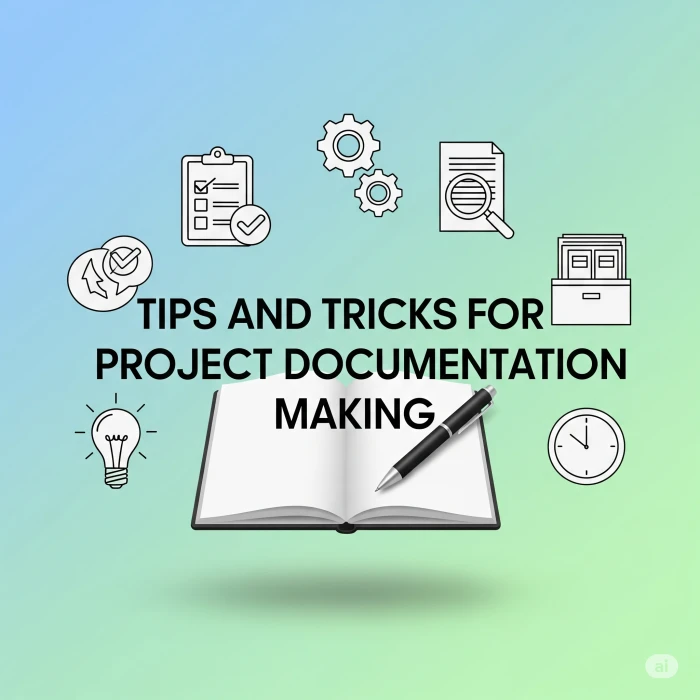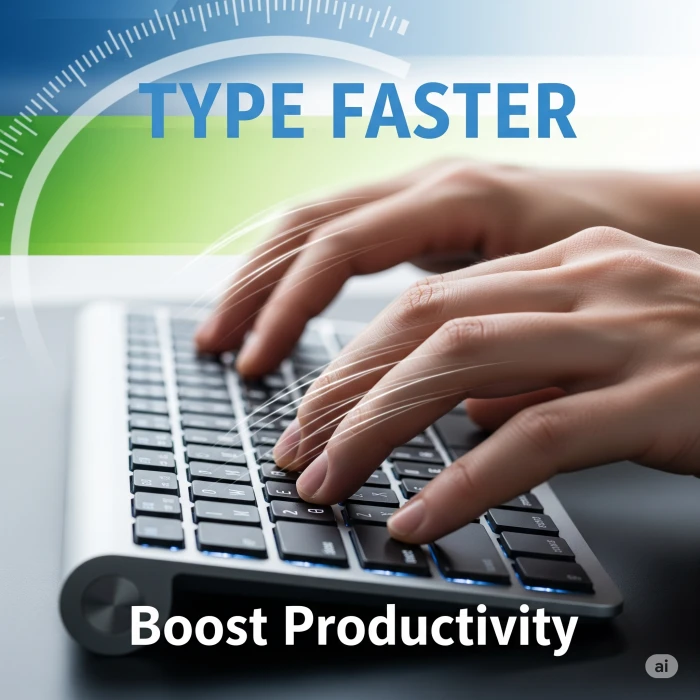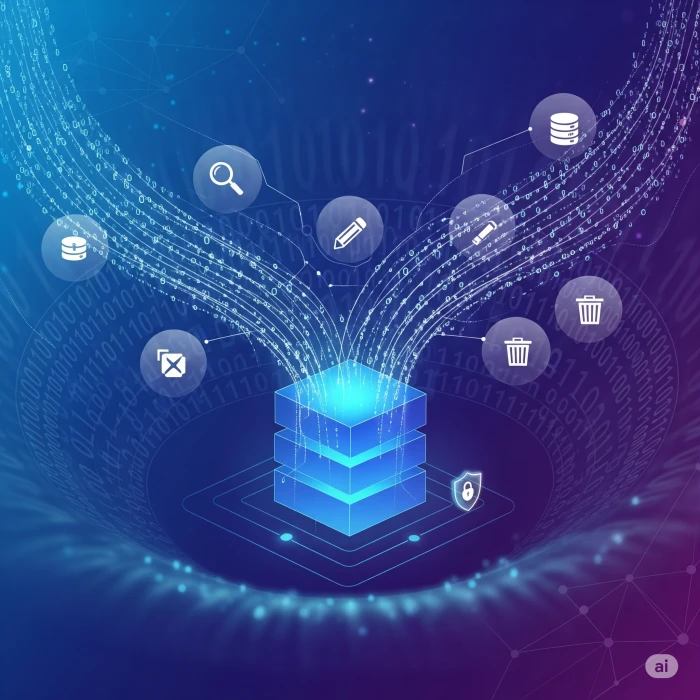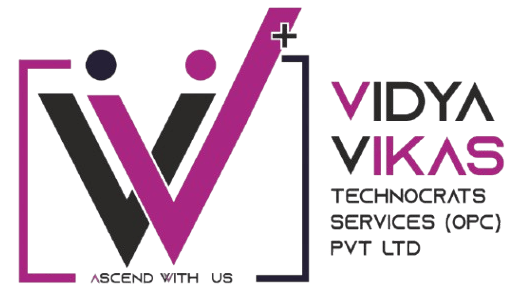IT-ITes
Admin VTECHNOCRATS
139

Tips and Tricks for Project Documentation Making
Project documentation is an art and a science. It's about effectively capturing information to ensure project success, facilitate communication, and create a lasting record. For anyone, but especially graduates looking to make a strong impression, mastering documentation is key. Here are some tips and tricks to elevate your project documentation:
General Tips & Mindset
-
Start Early, Document Often: Don't treat documentation as an afterthought. Integrate it into your workflow from the project's inception. Daily or weekly updates are easier than trying to recall details months later.
-
Know Your Audience: Before writing, consider who will read this document.
-
Technical Audience: Use industry-specific terminology and technical details.
-
Management/Stakeholders: Focus on high-level summaries, progress, risks, and business impact.
-
New Team Members: Provide background, context, and clear instructions.
-
Your Future Self: What information would you need if you revisited this project in a year?
-
-
Clarity, Conciseness, Consistency: These are the three pillars.
-
Clarity: Use simple, unambiguous language. Avoid jargon where possible, or define it clearly.
-
Conciseness: Get to the point. Eliminate redundant words, phrases, and sentences.
-
Consistency: Maintain consistent terminology, formatting, and tone across all documents.
-
-
Adopt a Standard Naming Convention: This seems minor but is a huge time-saver.
-
ProjectName_DocType_Version_Date.docx(e.g.,Apollo_ProjectCharter_v1.0_20250727.docx) -
Consistent folder structures also help!
-
-
Version Control is Non-Negotiable: Always use a system (SharePoint, Google Drive, Git, Dropbox Business, etc.) that tracks changes, allows rollbacks, and shows who made what edits. Never work on local copies without a clear sharing and merging strategy.
-
Templates are Your Best Friend: Don't reinvent the wheel. Use existing templates for meeting minutes, status reports, requirements documents, etc. If none exist, propose creating them. This ensures consistency and saves time.
-
Embrace Visuals:
-
Flowcharts/Diagrams: Illustrate processes, workflows, and system architectures.
-
Screenshots: For user guides, bug reports, or illustrating UI elements.
-
Tables: Organize data concisely (e.g., requirements, task lists, comparisons).
-
Graphs/Charts: Visualize progress, budget, or performance metrics.
-
-
Regular Reviews: Don't just write and forget. Schedule regular reviews (e.g., weekly, before major milestones) with relevant stakeholders to ensure accuracy, completeness, and relevance.
-
Store Centrally and Accessibly: All project documents should reside in a single, easily accessible location for the entire team. Avoid scattering documents across personal drives or inboxes.
-
Think About Searchability: Use keywords and clear headings. When people need to find information quickly, how will they search for it?
Specific Tips for Different Document Types
For Meeting Minutes:
-
Pre-fill: Create the basic structure (date, time, attendees, agenda) before the meeting starts.
-
Focus on Decisions & Action Items: These are the most critical elements. Who is doing what by when?
-
Assign Owners and Due Dates: Every action item needs a clear owner and a target completion date.
-
Keep it Concise: Don't transcribe the entire conversation. Summarize key points.
-
Distribute Promptly: Send minutes out within 24 hours of the meeting while details are fresh in everyone's mind.
-
Note Absences/Late Arrivals: Good for historical context.
For Status Reports:
-
"Traffic Light" System: Use green, amber, red indicators for overall project health or specific areas (scope, schedule, budget, risks).
-
Highlight Key Accomplishments: What progress was made since the last report?
-
Address Challenges/Blockers: Be transparent about what's hindering progress.
-
Clearly State Next Steps: What will the team be focusing on until the next report?
-
Quantify Where Possible: Instead of "some progress," say "5 out of 10 features completed."
-
Tailor for the Audience: A report for senior management will be different from one for the project team.
For Requirements & Specifications:
-
Be Specific and Unambiguous: Avoid vague terms like "fast," "easy to use," "flexible." Define what those mean in measurable terms.
-
Prioritize: Not all requirements are equal. Use MoSCoW (Must, Should, Could, Won't) or other prioritization methods.
-
Testable Requirements: Can you write a test case for this requirement? If not, it's likely not specific enough.
-
Use Visuals (UML, Wireframes): Help illustrate complex interactions or user interfaces.
-
Maintain Traceability: Link requirements to design, development, and test cases.
For Technical Documentation (Design Docs, User Manuals):
-
Structure is Key: Use clear headings, subheadings, and a table of contents.
-
Explain "Why," Not Just "How": Provide context for design choices or system architecture.
-
Include Examples: Code snippets, usage examples, screenshots for clarity.
-
Maintain Glossary: Define technical terms or acronyms used.
-
Keep it Up-to-Date: As the system evolves, so should its documentation.
-
Consider Peer Review: Get other technical folks to review for accuracy and clarity.
Tools & Technologies for Better Documentation
-
Collaborative Document Editors:
-
Google Docs/Sheets/Slides: Excellent for real-time collaboration, commenting, and version history.
-
Microsoft 365 (Word, Excel, PowerPoint, SharePoint): Similar collaboration features, widely used in corporate environments.
-
-
Project Management Tools (often have built-in documentation features):
-
Jira/Confluence: Confluence is specifically designed for knowledge management and project documentation, often integrated with Jira for task tracking.
-
Asana/Trello/Monday.com: While primarily for task management, they allow attaching documents and adding detailed descriptions.
-
ClickUp/Notion: Highly flexible tools that can be customized for extensive documentation, wikis, and task management.
-
-
Diagramming Tools:
-
Lucidchart/draw.io (diagrams.net): For flowcharts, UML diagrams, network diagrams.
-
Miro/Mural: Online whiteboards for brainstorming, mind mapping, and creating visual documentation collaboratively.
-
-
Markdown Editors:
-
If your team uses Git or primarily text-based documentation, learning Markdown is incredibly useful for simple, clean formatting.
-
-
Screenshots & Screen Recording Tools:
-
Snip & Sketch (Windows), Cmd+Shift+5 (Mac): Built-in screenshot tools.
-
Greenshot, ShareX (Windows): More advanced screenshot and annotation tools.
-
Loom, OBS Studio: For recording video tutorials or walkthroughs.
-
By applying these tips and tricks, you'll not only create better project documentation but also demonstrate invaluable organizational skills, attention to detail, and a commitment to transparency – qualities that are highly valued in any professional setting.


